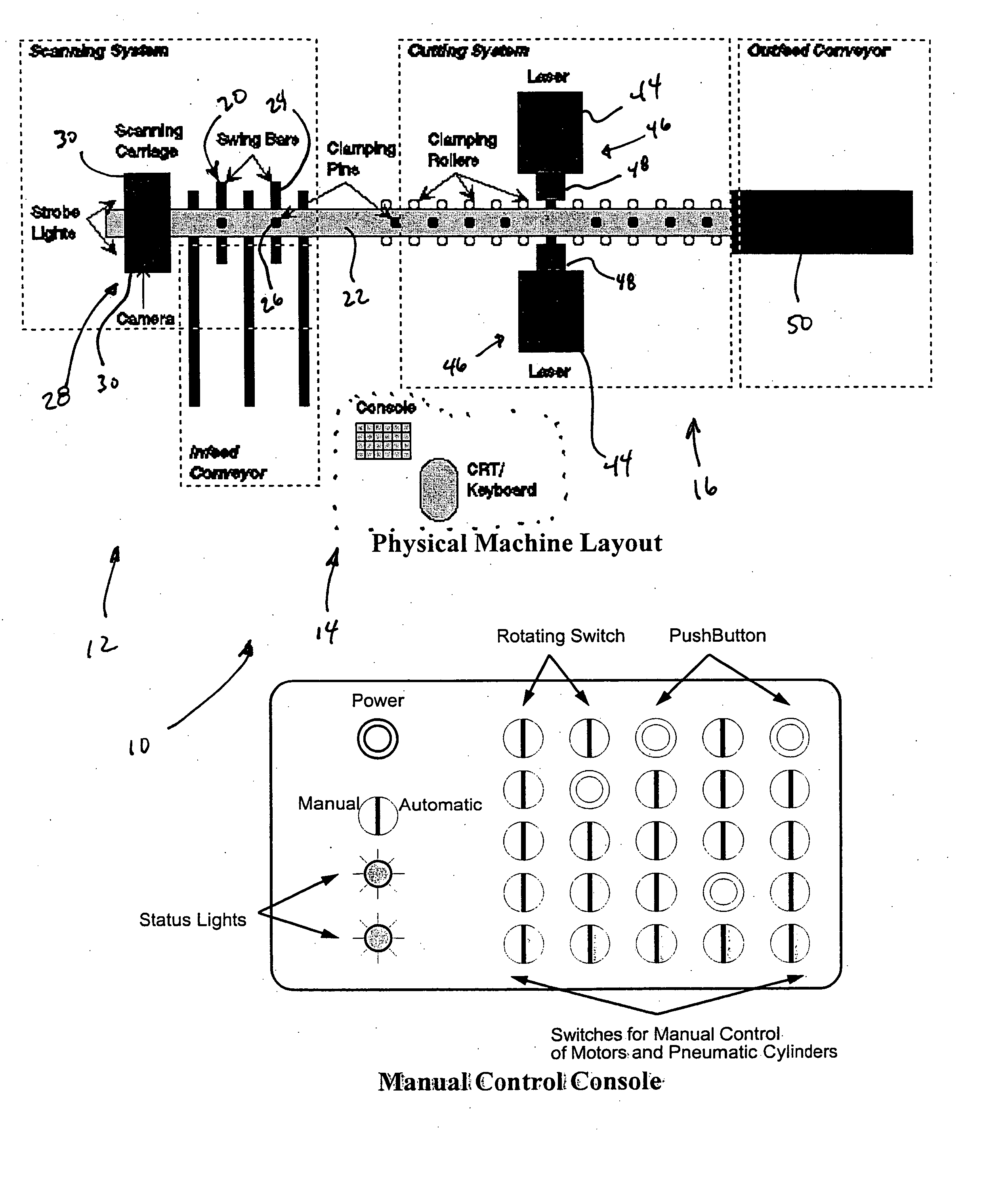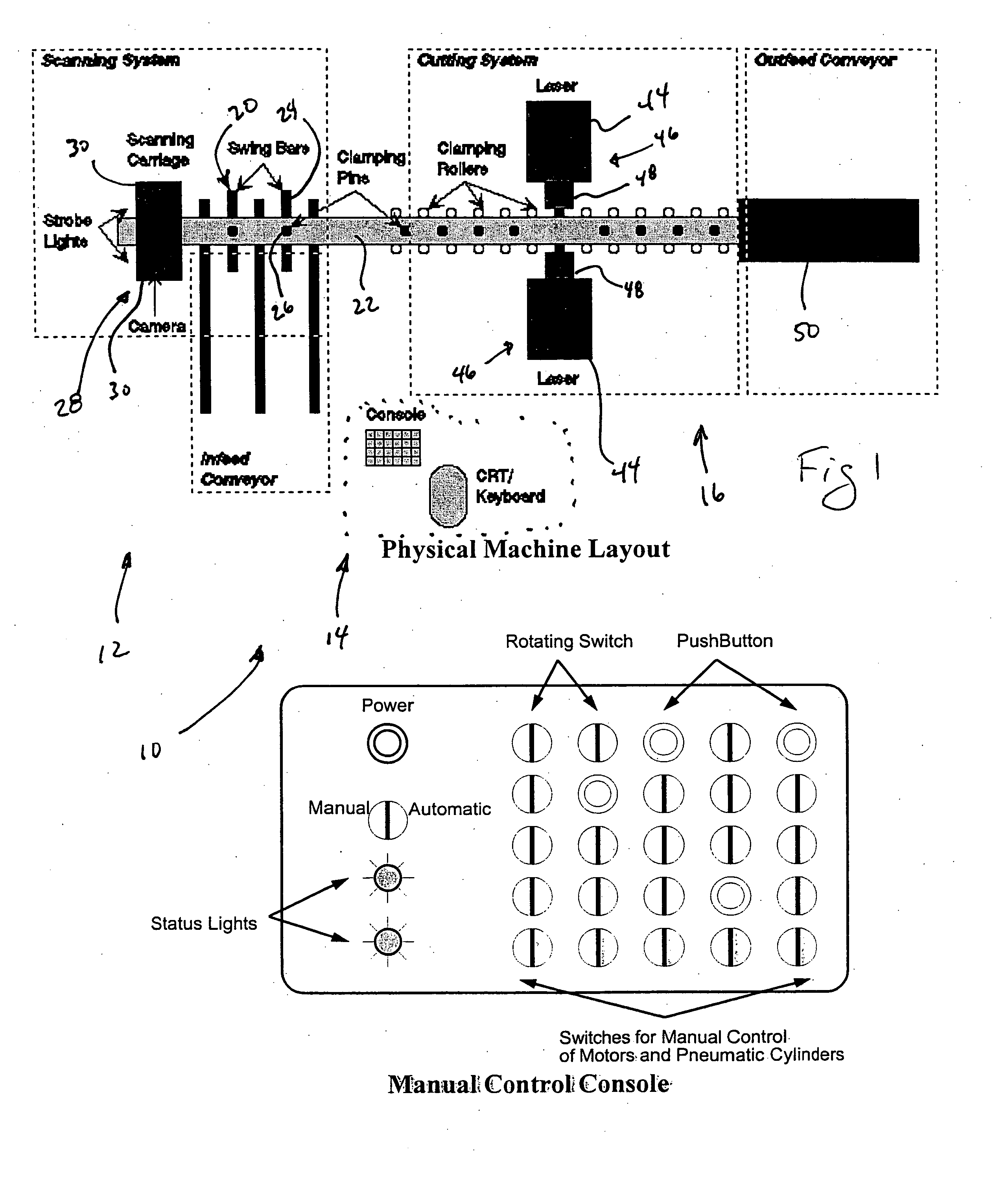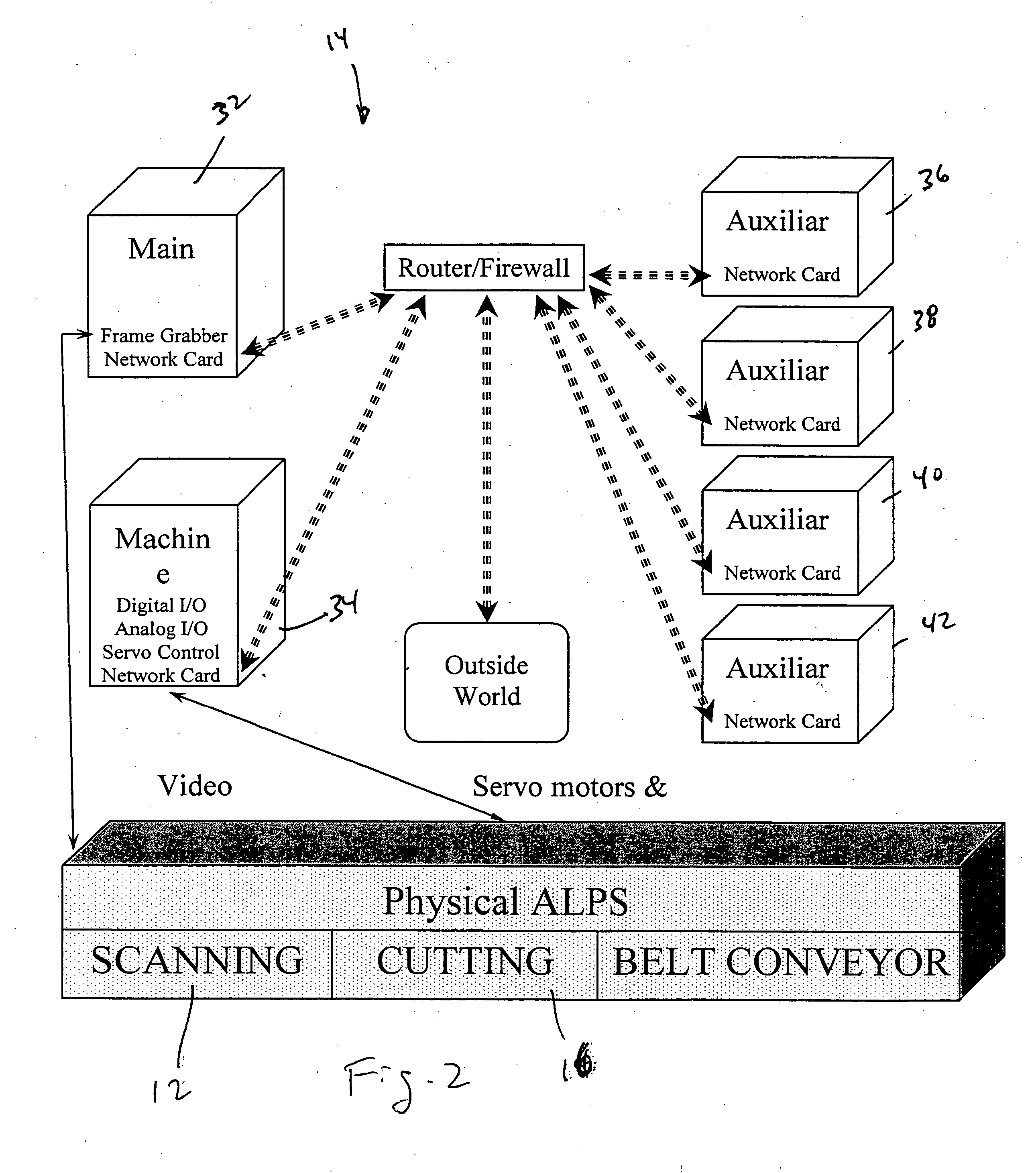Lumber processing system
a processing system and lumber technology, applied in the field of lumber analysis, can solve the problems of large waste, low value of cut parts, and relatively high waste percentag
- Summary
- Abstract
- Description
- Claims
- Application Information
AI Technical Summary
Benefits of technology
Problems solved by technology
Method used
Image
Examples
Embodiment Construction
[0034] Referring now to the drawings, FIG. 1 depicts a preferred embodiment of a lumber processing system 10. The system 10 broadly includes a scanning section 12, a computer section 14, and a cutting and output section 16. Generally, the pieces of lumber configured for use in the system 10 are elongated and present a pair of opposed faces with a rectangular cross-sectional shape. For example, the piece of may have a 2″×10″ cross-sectional dimension. Of course, the system 10 may also accommodate lumber of various other dimensions.
[0035] The scanning section 12 includes an infeed conveyor 18 for receiving a piece of lumber. The infeed conveyor 18 transfers the lumber to a rotation station 20 along a central conveyor 22. The rotation station 20 uses a plurality of swing bars 24 to rotate the lumber from a flat, horizontal configuration to a vertical configuration where the faces of the lumber are generally vertical. A plurality of clamping pins 26 is provided to firmly support the lu...
PUM
| Property | Measurement | Unit |
|---|---|---|
| density | aaaaa | aaaaa |
| color | aaaaa | aaaaa |
| mass | aaaaa | aaaaa |
Abstract
Description
Claims
Application Information
 Login to View More
Login to View More - R&D
- Intellectual Property
- Life Sciences
- Materials
- Tech Scout
- Unparalleled Data Quality
- Higher Quality Content
- 60% Fewer Hallucinations
Browse by: Latest US Patents, China's latest patents, Technical Efficacy Thesaurus, Application Domain, Technology Topic, Popular Technical Reports.
© 2025 PatSnap. All rights reserved.Legal|Privacy policy|Modern Slavery Act Transparency Statement|Sitemap|About US| Contact US: help@patsnap.com



